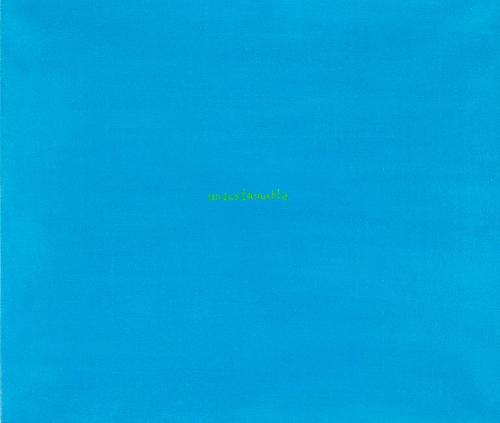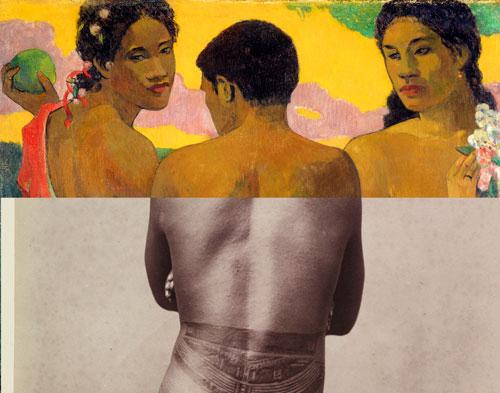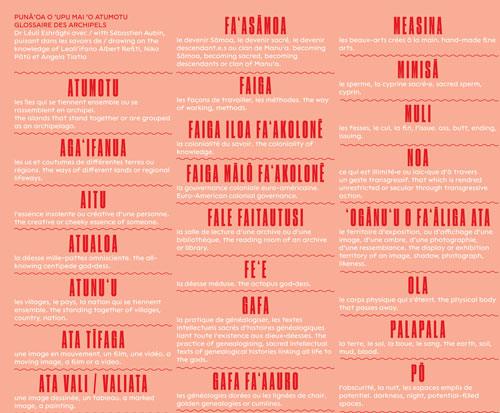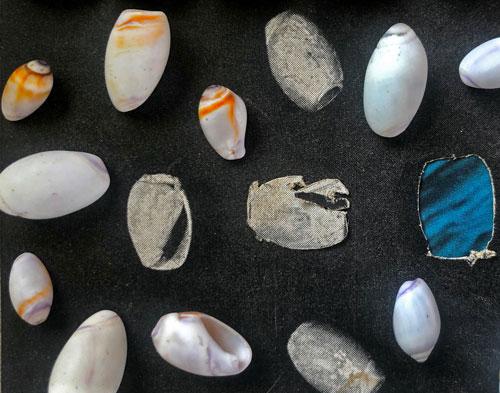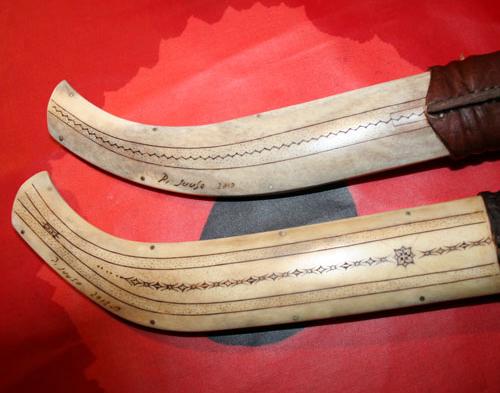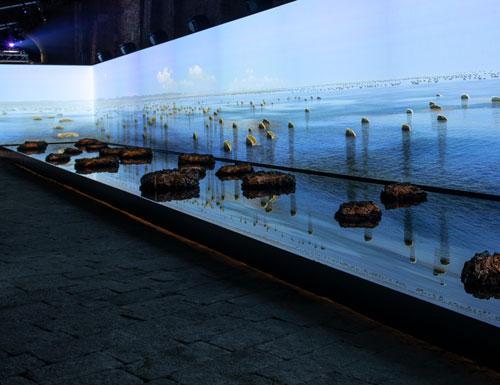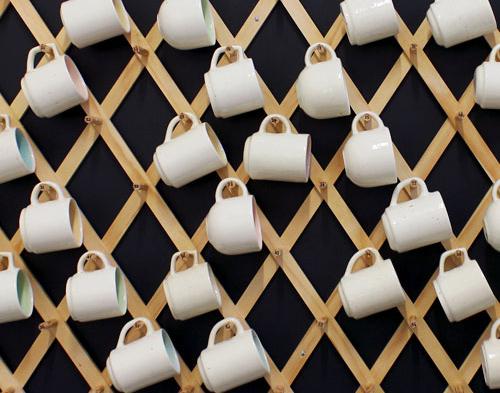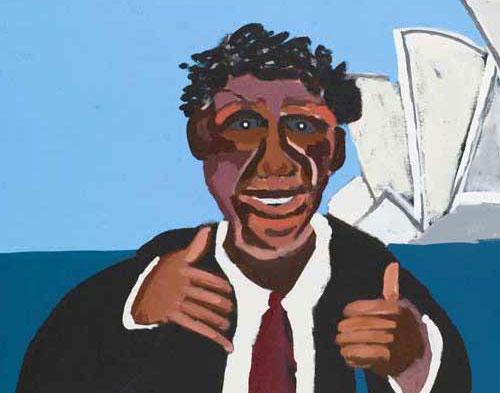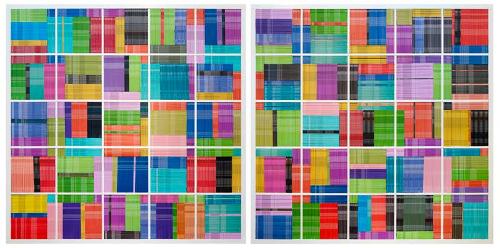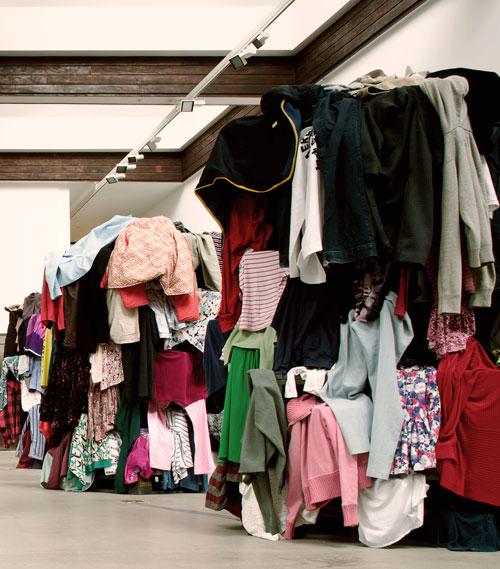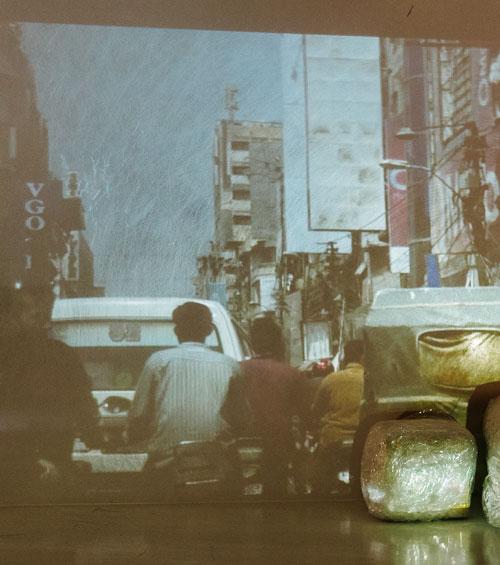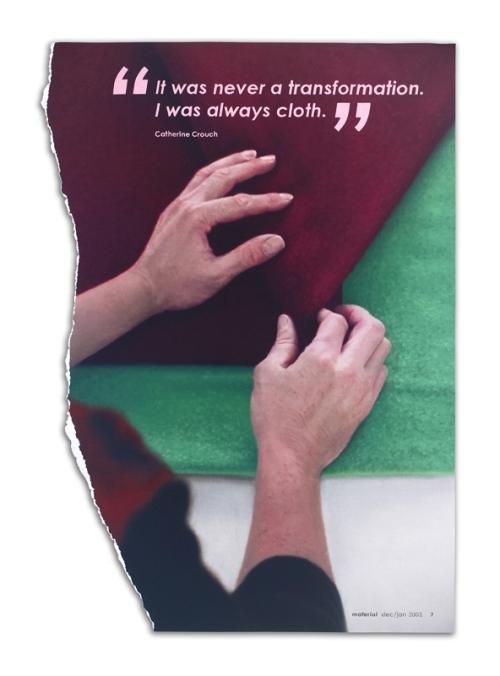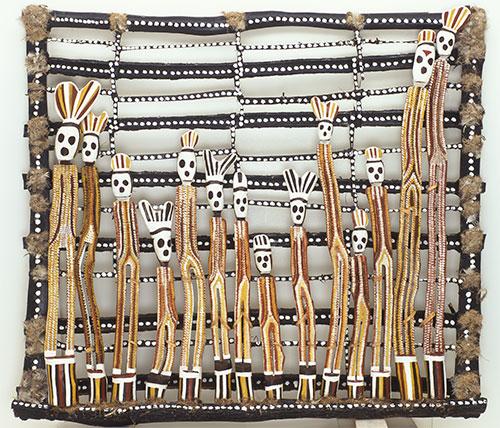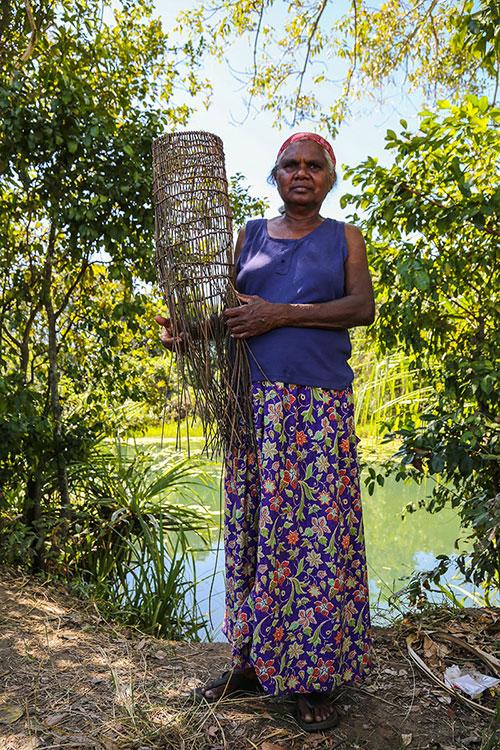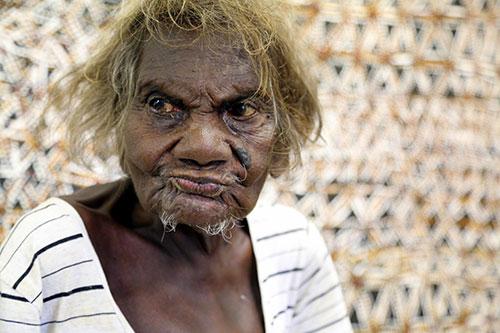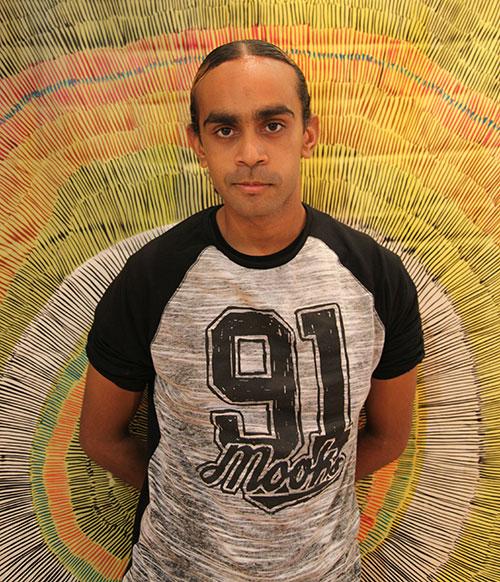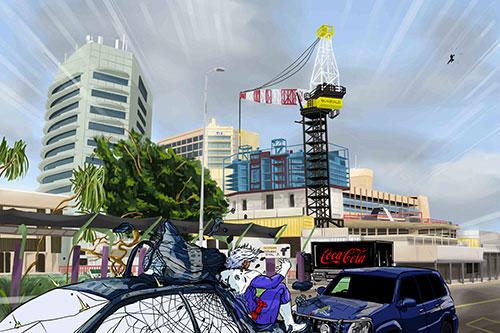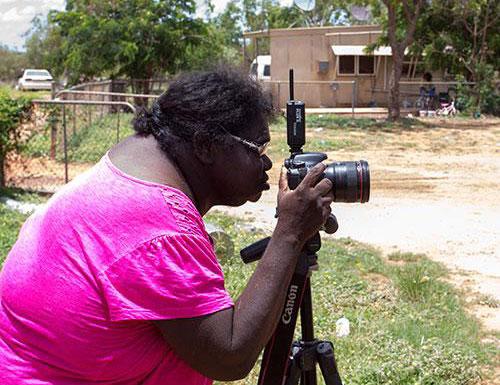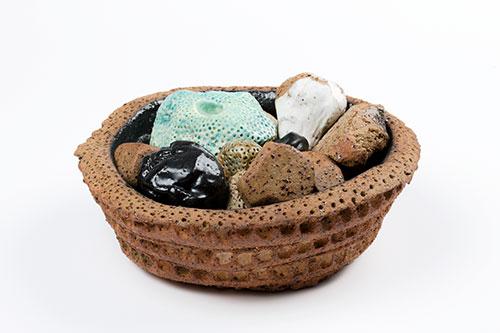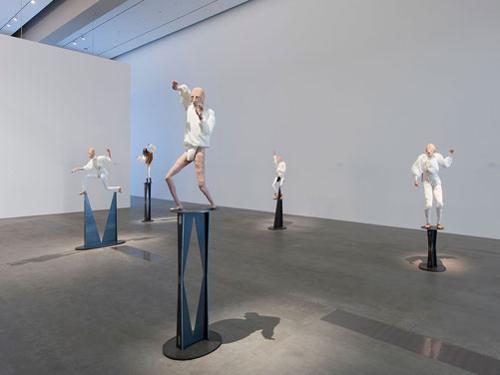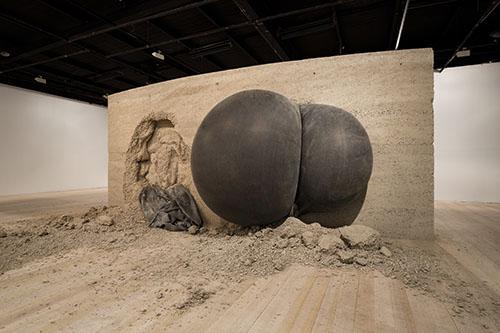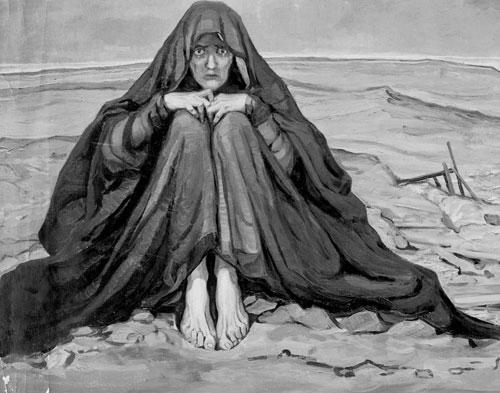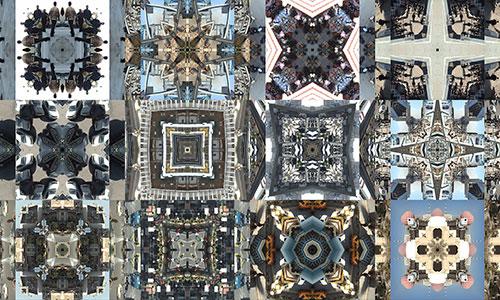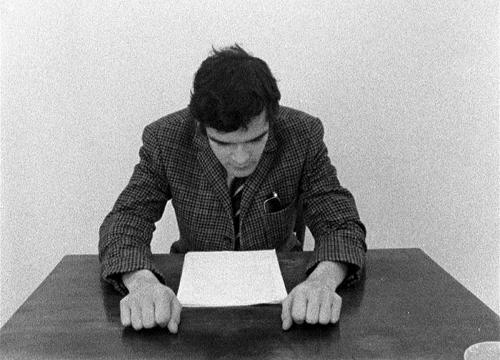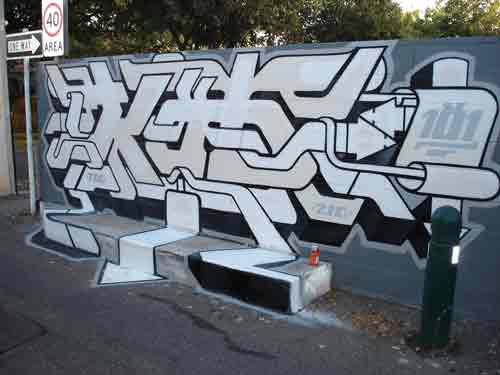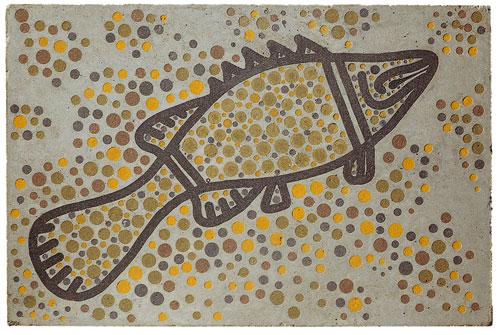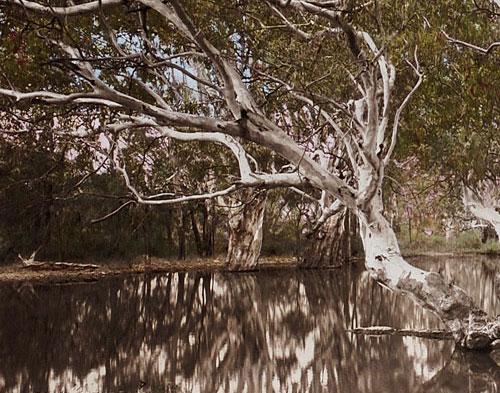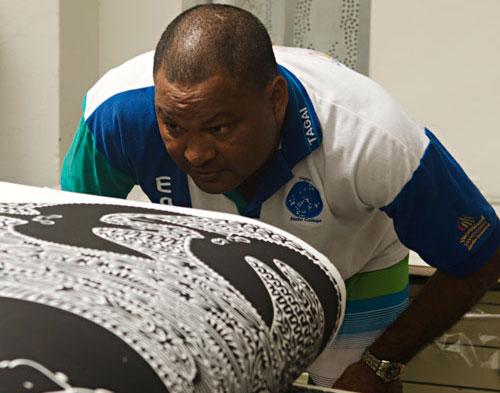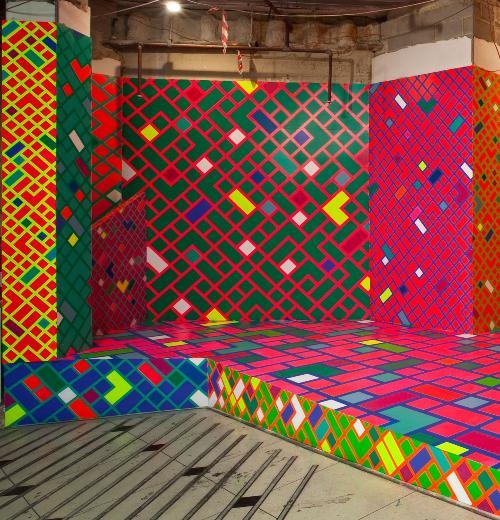Search
You searched in Artist Profile ...
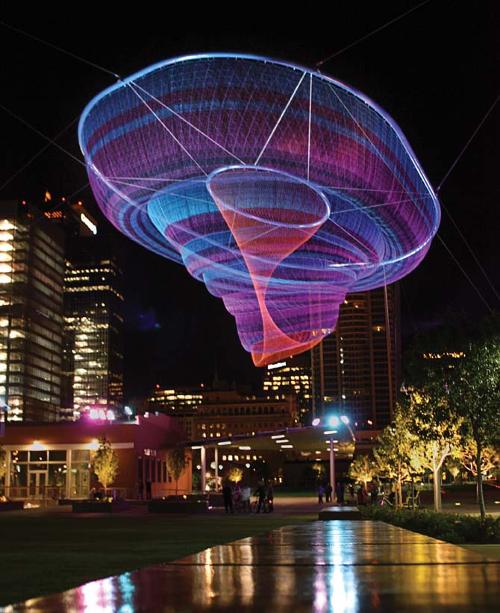
Choreography of the elements: Janet Echelman
American artist Janet Echelman reshapes urban airspace with monumental, fluidly moving sculpture that responds to environmental forces including wind, water, and sunlight. The artist’s ongoing series of aerial net sculptures started in 1997 when she was in India as a Fulbright Scholar and became fascinated with the beauty and movement of traditional fishing nets. In 2011 her installation 'Tsunami 1.26' hung over the Town Hall traffic intersection in Sydney as a joint initiative of the Powerhouse Museum and Art and About Sydney.
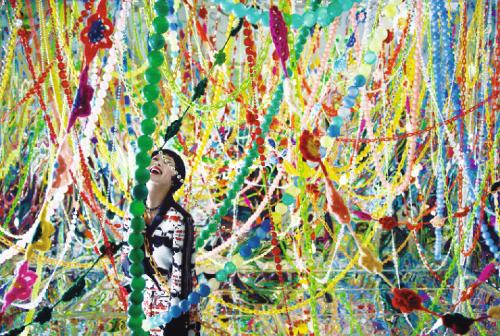
Three Korean artists at the 8th Asia Pacific Triennial of Contemporary Art
Yeon Shim Chung on artists Choi Jeong-Hwa, Haegue Yang, and Siren eun young jung
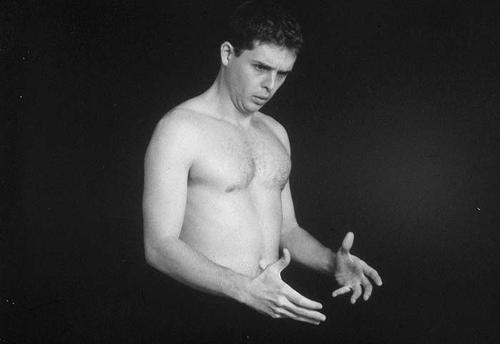
True fairytales of violence: Art and the Holocaust in Hungary
Adam Geczy on art, history and identity politics

Reko Rennie
Reko Rennie is an interdisciplinary artist who explores his Aboriginal identity through contemporary mediums. He explores his artistic beginnings and early influences such as the work of Howard Arkley.
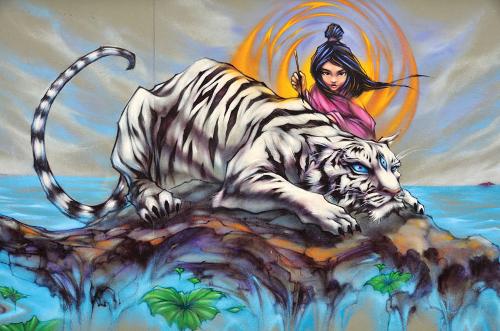
DASH88
Dash88 is an Australian artist of Chinese Malay ancestry, living and working in Melbourne. He writes about how he began doing grafffiti and what it means to him.
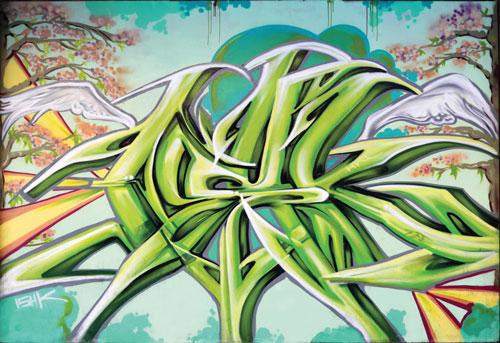
Nish Cash
Nish Cash is a graffiti artist based in Melbourne. She talks about how she got started writing graffiti and about the support offered by Ladie Killerz, (a national female graffiti event that happens annually with a wall jam, exhibitions, and performances).

The Ghost Net art project
Program Director for Ghost Nets Australia Sue Ryan describes how the Ghost Net Art Project began and what it is all about - people using eco-trash to share stories and express their creativity.

Archie Moore: drilling deep
Freelance curator and writer Tim Morrell studies the art practice of Brisbane-based Archie Moore which is emphatically free from any signature style and is concerned with sharing his experience as an Indigenous Australian in order to put viewers 'in his shoes'.

Caroline Durré: Reforming the earth
Drawing Studio and Program Co-ordinator at Monash University Stephen Garrett examines the optically challenging artworks of Caroline Durré which blend patterns and perspectives.
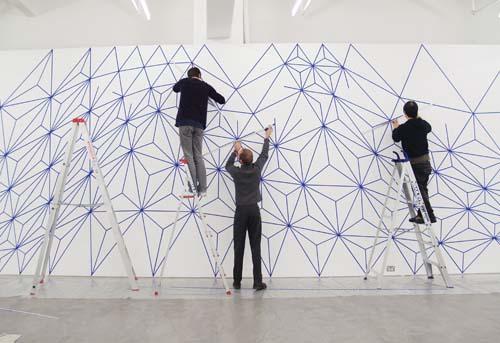
The Poliness wall drawings: not quite right
Artist Kerrie Poliness writes about her wall drawing projects, one of which appears in the exhibition 'Art, Pattern and Complexity' at RiAus, Adelaide from 16 February to 16 May 2012. The wall drawings begin with the artist's instructions but are produced with intuition rather than rulers.
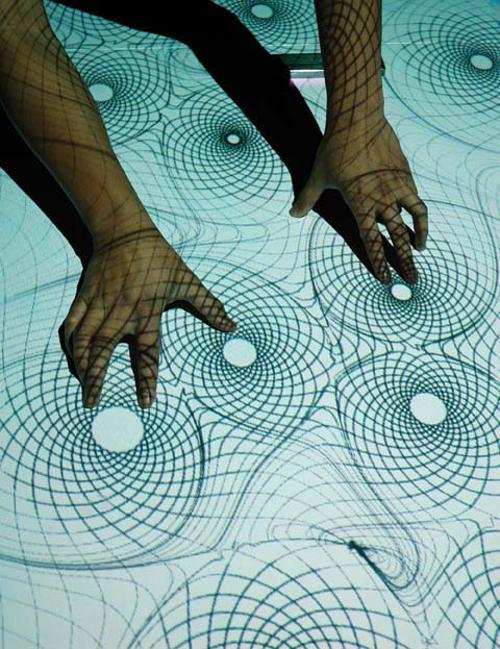
Mesne: Stitches in the Air: computational craft
Media artist, techno-evangelist and digital nomad Fee Plumley responds to Mesne Design Studio's lacemaking environment 'Pricking Version 2.0' which is their answer to the question “what happens if you apply computational processes to the historical notion of craft?”.
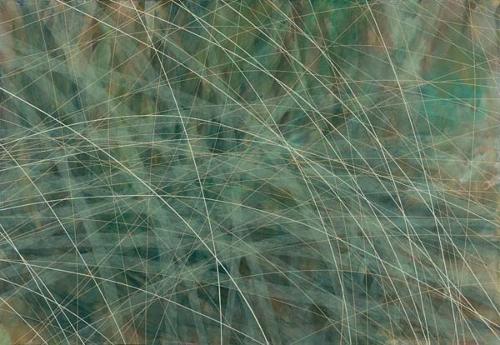
Shape of the wind: pattern & chaos in Sue Lovegrove's island art
Head of Environmental Studies at the University of Tasmania and writer Peter Hay describes the recent paintings of Sue Lovegrove made from her experience of different islands off the coast of Tasmania - Maatsuyker Island, Egg Island and most recently Tasman Island. Lovegrove began with painting clouds but has moved on to paint the shape of the wind.
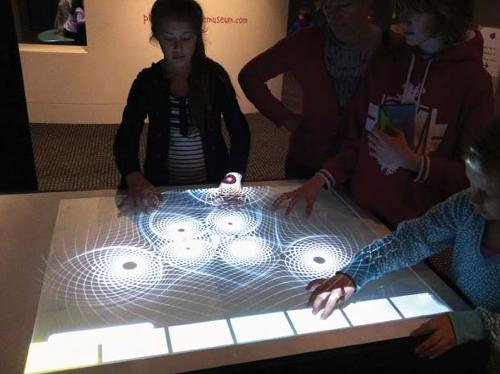
Mesne: Pattern In(formation)
Tim Schork and Paul Nicholas founded MESNE Design Studio, an innovative architecture and urban design studio working globally as one office from London and Melbourne, to explore the relationship between architecture and divergent domains of knowledge through the use of computation in order to create innovative design strategies for novel spatial structures. They write about the back story of the project "Pricking', an interdisciplinary collaborative project between MESNE Design Studio, Ian Maxwell (supermanoeuvre) and Indae Hwang, which involves an interactive lace-making table with an infra-red based multi-touch interface.
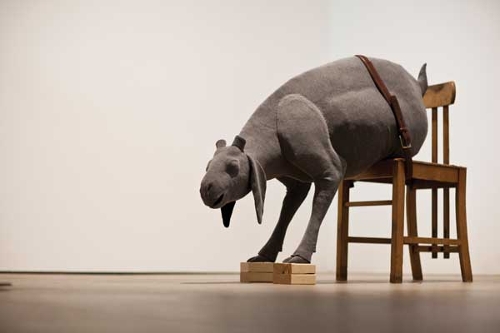
Sympathy for the Devil: the creatures of Julia Robinson
South Australian artist Julia Robinson's striking sculpture draws on the darkness in human culture that has often been represented by goats. Made from fibreglass and snugly covered in fabric they assume strange forms and positions that give them a "reverberating energy".

Talking about my g-g-g-generation: Mark Siebert
Mark Siebert: Forever 27 is at the Experimental Art Foundation, 15 May – 13 June 2009.

Lynette Wallworth: shared moments of revelation
Lynette Wallworth's New Media Art is subtle and complex. Empathy is the emotion at the heart of all her works such as Invisible by Night in which the viewer activates the work by reaching out to make contact with a grieving woman and Hold in which viewers catch imagery in glass bowls. Wallworths international profile is rising. She has exhibitions planned for France (Aix en Provence Festival), the Melbourne Festival in 2008 and the Adelaide Film Festival 2009 and with each new project she is striking an emotional chord in her audiences that resonates long after the physical engagement with the work is over.

Rose Farrell and George Parkin: home (operating) theatre
Rose Farrell and George Parkin's art consist of photographs of tableaux involving the artists in sets that they build in their home. They frequently copy old medical illustrations in which the reality of the past is both made to live and to seem ever more mythical. Dylan Rainforth takes an informative and affectionate approach to the complexity of Farrell and Parkin's modus operandi and their newest photographic series called Restoration.

Deborah Kelly's gods, monsters and probable histories
Each of Deborah Kelly's projects has multiple identities and is cut to fit a certain idea. They are 'both nomadic and site-specific, traversing worlds from art institutions to supermarket shelves and creating multifarious audiences along the way'. Her best known work 'Beware of the God' was first projected over the MCA in 2005 and was last seen at the 2008 Singapore Biennale.

George Gittoes art and the war on terror
George Gittoes' latest film Miscreants was made in Pakistan and records the contradictions of life there with the polemic of Goya and the speed of an MTV music clip. This film follows his earlier cult films Soundtrack to War and Rampage. Gittoes is never a dispassionate observer, he continues to paint and to draw, making war art that is emotional as well as rich with the difficult truths of our time.

The dramatic tensions of some place: Mary Scott
Tasmania-based Mary Scott's art ranges across media from traditional to cutting edge. Sometimes she meticulously paints oil on linen from digitally devised imagery, at other times she uses multiple inkjet prints as the final work. Focusing on Scott's 2007 exhibition Some Place at Criterion Gallery in Hobart, Mary Knights describes her hallucinogenic and unheimlich works as depicting 'with detachment and clarity the spectrum of human fragility.'

Landscape and complexity: Raquel Ormella
Raquel Ormella's art is political and takes many circuitous approaches to complex issues. Her recent work Wild Rivers: Cairns, Brisbane, Sydney shown in the 2008 Sydney Biennale called up a political landscape of maddening complexity even as it emphasises the need for direct action. Bec Dean writes: 'Ormella is a kind of critical idealist who understands not only the effectiveness of lobbying and the power of the individual in bringing about change but also the slow-burn persistence of such change.'

Craig Walsh transfigured nights, surprising days
The artworks developed by Craig Walsh over the last sixteen years in Australia and around the world take the immediacy of the moving image and place it in unexpected places doing unexpected things. With a strong global profile he is increasingly being asked to participate in prestigious international events, most recently Drift 08 in London and Koganecho Bazaar in Yokohama.

Karl Wiebke
Karl Wiebke has been making art for thirty years. Margaret Moore selectively reviews his oeuvre and concludes that though 'Beauty as an ideal is not a platform for his practice it is a consequence. His works are profoundly and atmospherically evocative of mood, weather, or nature like a bed of lichen or a sense of saturation. He has adopted a programmatic approach to his practice, setting schema and working toward attainment. That schema might incorporate an obligation of time, of mark-making, of palette or the allowance for interventions other than by his hand.

Cobi Cockburn
Cobi Cockburn is a glass artist whose work reflects her journey through the world, first in response to the country around Canberra and more recently the Shoalhaven district. It is her personal response to the landscape in which she lives (as opposed to a larger environmental message) which drives her to continue to push herself with a medium not typically used for landscape. Cockburns working methods of fusing, slumping, rolling, hot forming and cold working glass demonstrate clear connections from one piece of work to the next. Central to her motivation is the desire to create works of subtlety and grace. Cockburns working methods demonstrate clear connections from one piece to the next, yet each piece is a self-contained process in itself. A self-confessed addict of her book (her journal), Cockburn says that when she reviews her collection of journals, she can trace progress and a sense of continuous narrative. But she feels, on the whole, that her work is evolving more as a natural process as she herself develops both as an artist and a person. Each piece has its own essence, or presence, and comes together with others as collections which reflect part of the greater experience. Central to her motivation is the desire to create works of subtlety and grace, pieces that will stand for themselves but not shout at the viewer.

Robin Best
Robin Bests ceramics reflect her attention to the importance of location. Her forms are classical, meditative and reflective, and has ranged from marine forms to works decorated by Ernabella artist Nyukuna Baker. Her most recent body of work undertaken during and after a number of residencies in China reflects the complexity of the cultural, commercial and political history of China. Her snuff bottles are a picture gallery of images related to trade, culture and commerce, while others contain designs taken from each of the countries that blue and white porcelain passed through on its way from China to Europe via India and the Middle East.

Tina Gonsalves: Unleashing emotion
Tina Gonsalves is currently honorary artist in residence at the Wellcome Department of Imaging Neuroscience and visiting artist at the MIT Media Lab in the US. Her recent work is interested in adaptive, rather than expressive approaches to mental and emotional states. Gonsalves situates emotional states as rhizomorphic and emergent. In her new works, she has given the media art world a new concept, the emotional algorithm. Feel: Chameleon (2007/2008) introduces multiple subjects, both projected images and people, into a panoramic installation. It is a complex exploration of ideas drawn from the emerging discipline of social neuroscience which is interested in the ways in which people connect with the emotional state of others.

Lynette Walworth
Lynette Wallworth is driven by a passion to explore the natural world, to capture human stories, to explore the past and evoke memory and experience. As a media artist, she strives and succeeds to achieve an emotional and powerful connection between her images and her viewer.




